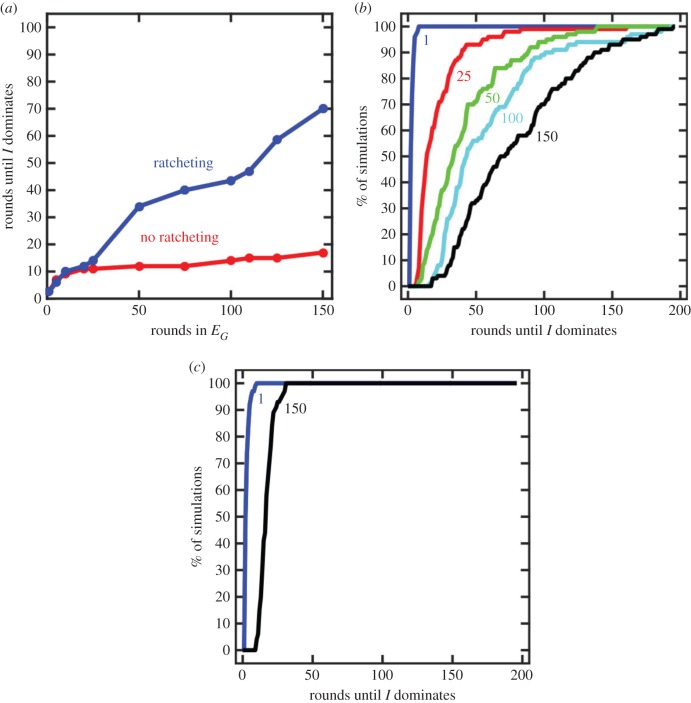Figure 2.
Ratcheting type 1 increases the stability of multicellularity. (a) The duration of G cells in an EI environment is shown as a function of the duration of growth in the EG environment. Each point is the median of 100 simulations. If type 1 ratcheting mutations do not occur (red) then the duration in EG has only a small effect on the stability of multicellularity by removing all pre-existing I cells from the population. By contrast, if ratcheting type 1 mutations occur (blue) there is a much larger increase in the stability of the multicellular form. Increased duration of growth in EG leads to increased accumulation of ratcheting traits and greater multicellular stability. (b) An empirical cumulative distribution function plot shows the effect of the duration of growth in EG on the variation in the persistence of multicellularity when ratcheting mutations occur. Depending on the magnitude and number of ratcheting mutations that fix in the population, the stability of multicellularity can be three to five times greater than the median. (c) For comparison, a similar plot is shown when there are no ratcheting mutations.

